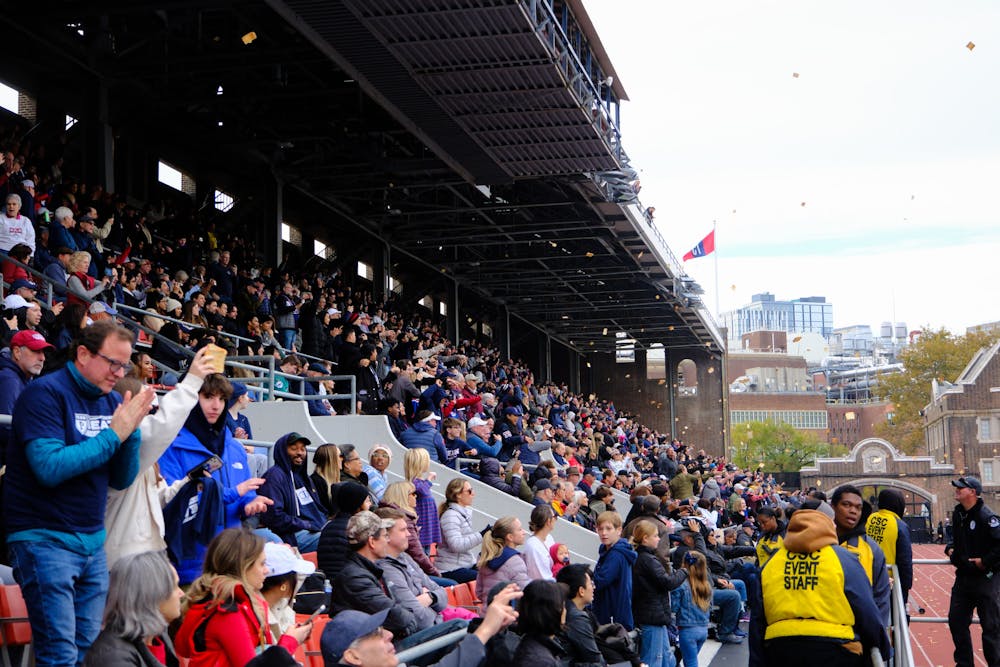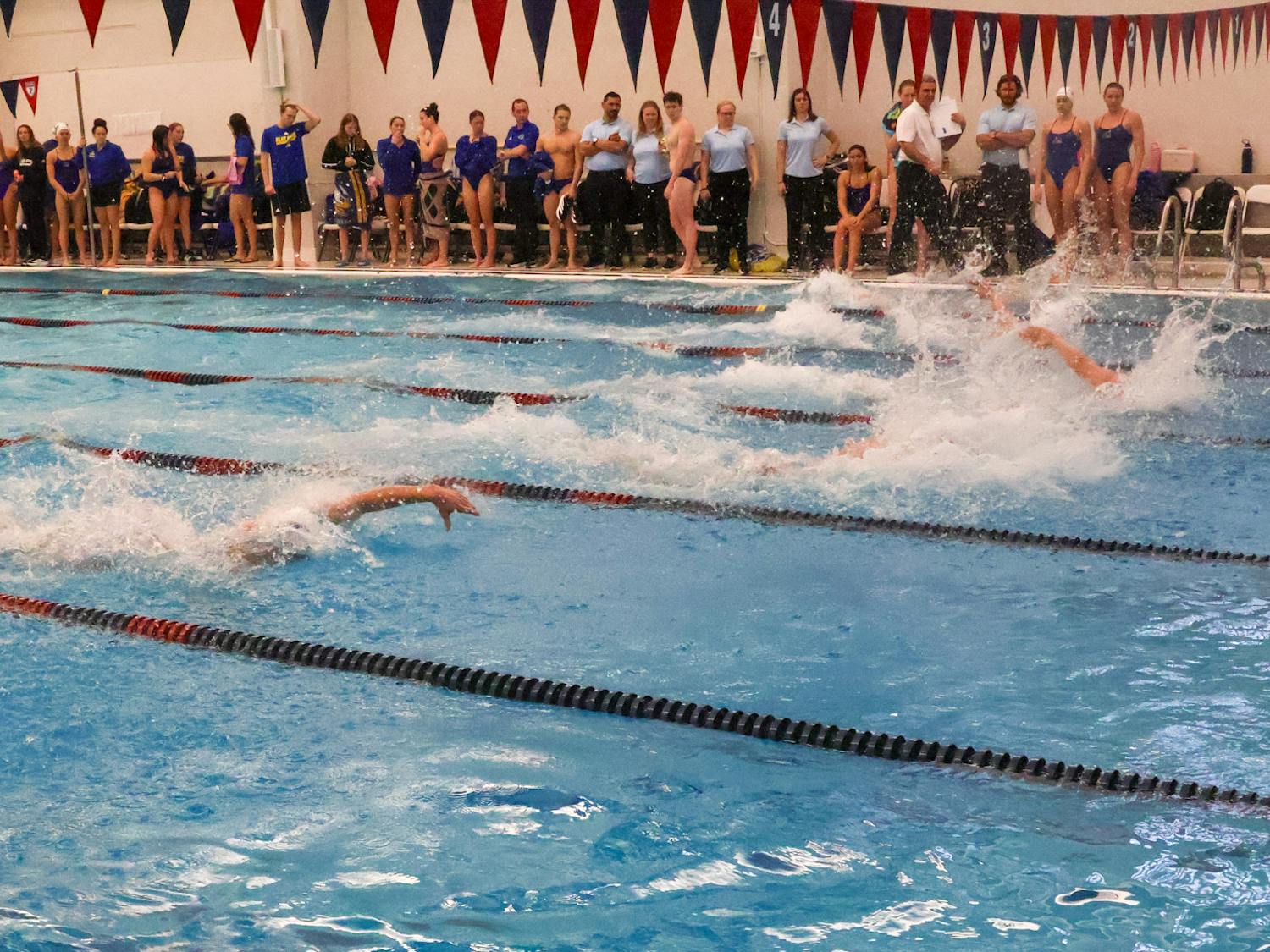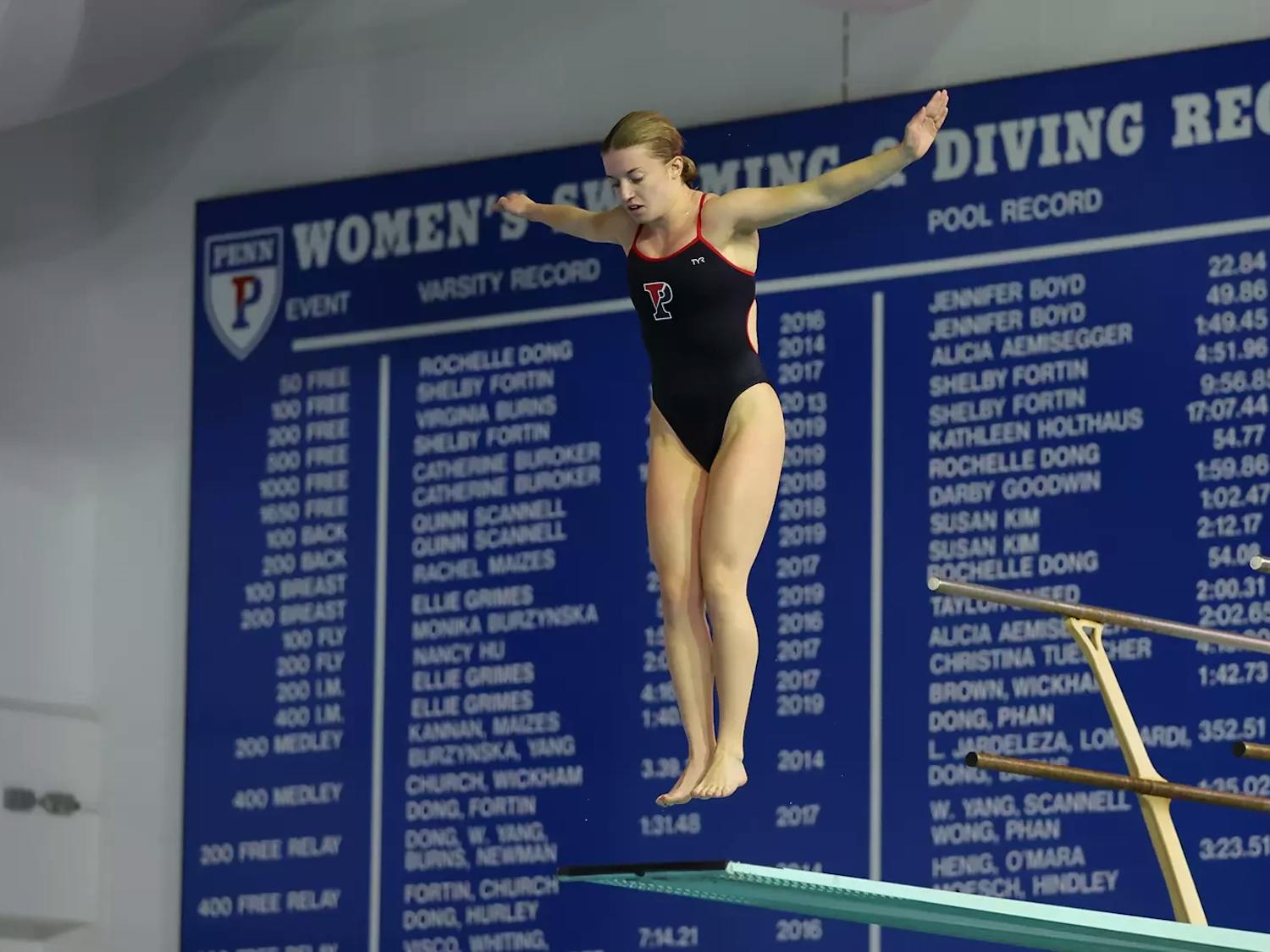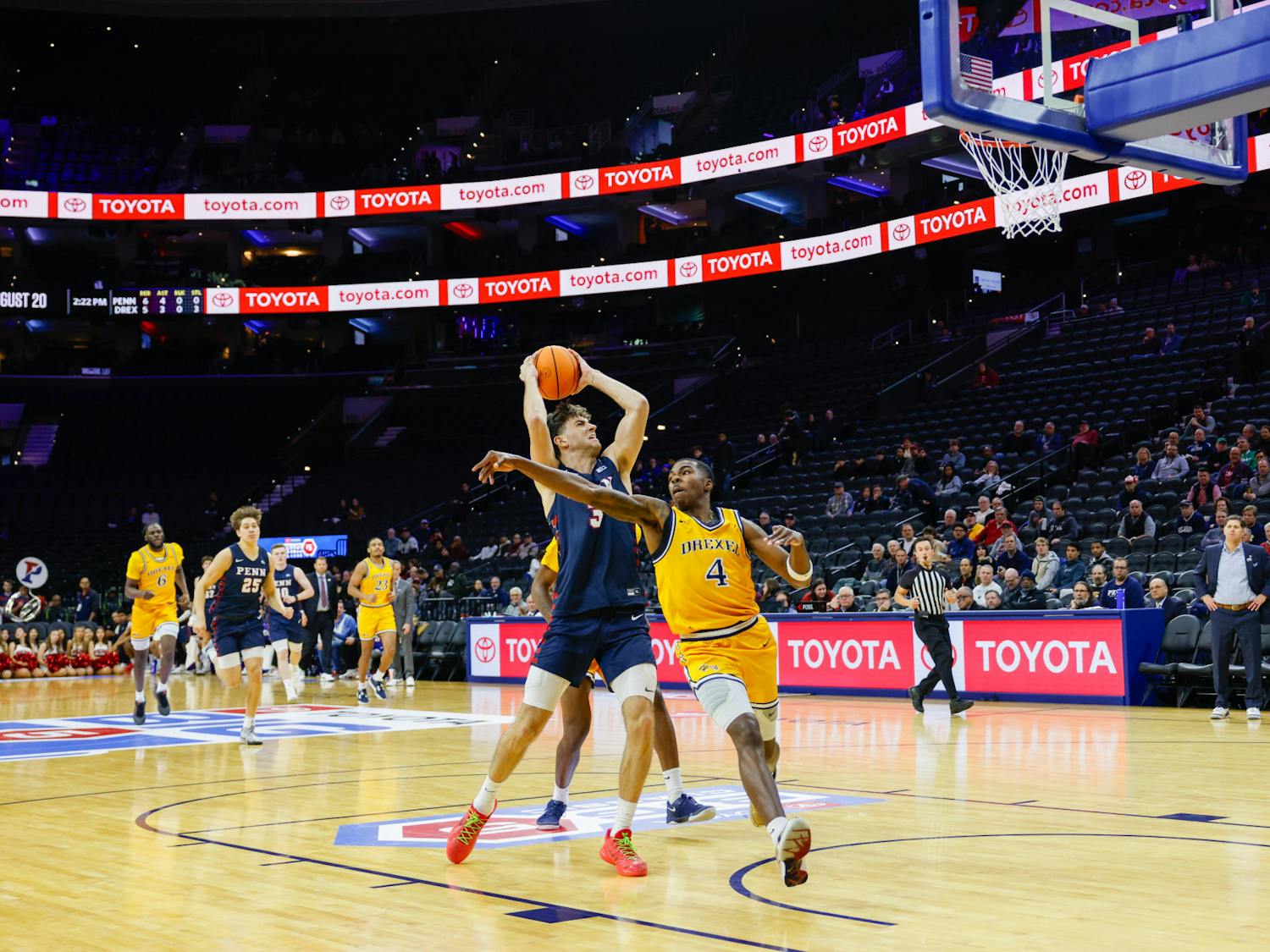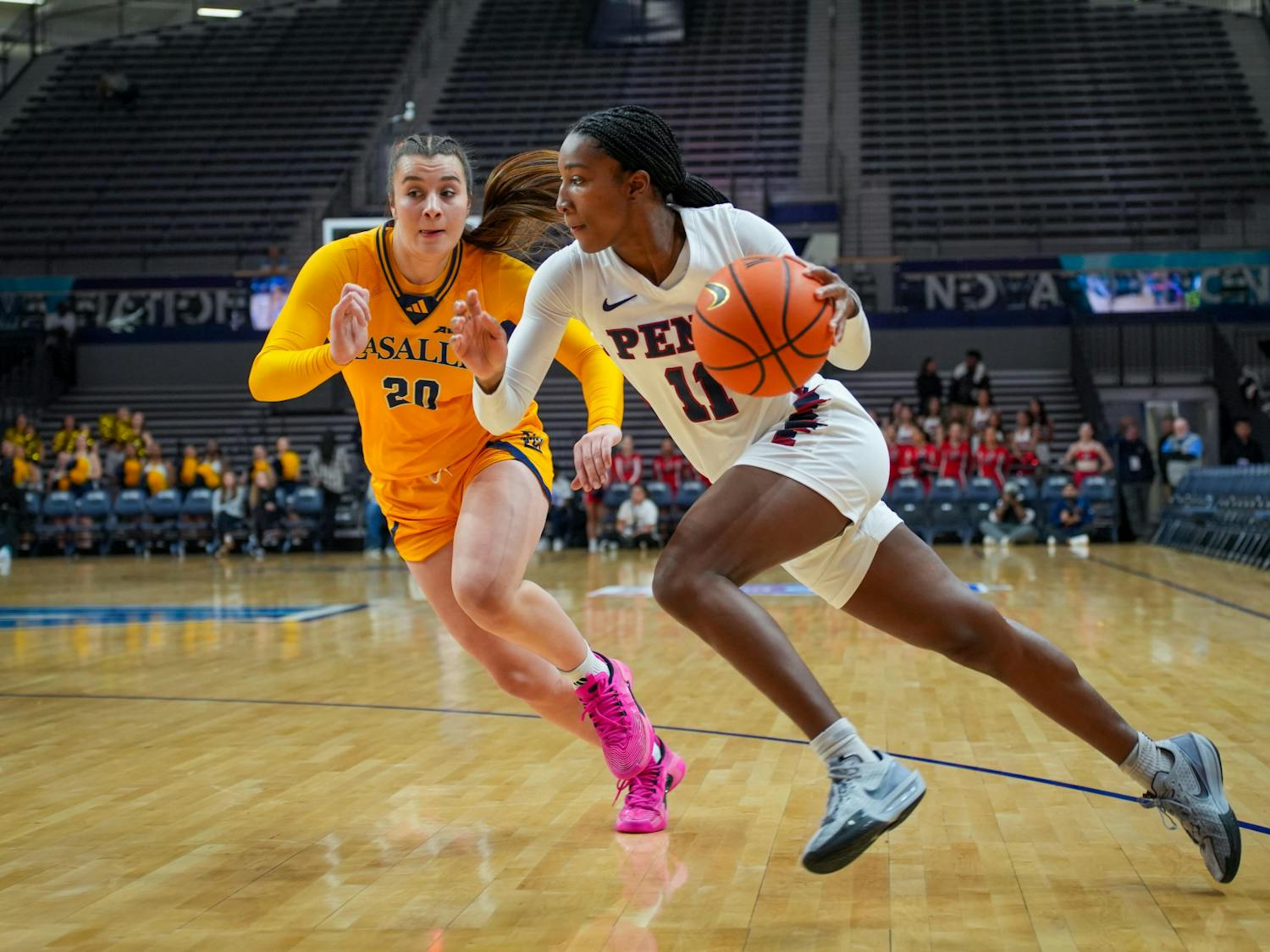A thrilling Homecoming victory, promising breakout campaigns, 13 All-Ivy honorees — this season, Penn football saw plenty of highs. The lows? Attendance.
In recent years at least, Penn hasn't been known for a packed Franklin Field. Granted, its two-tiered 52,958 maximum seating capacity is the fourth largest in the FCS. But with a storied 147-season history, vast and loyal alumni base, and free student admission, it certainly has the capability to. Instead, attendance has been on the decline over the past two decades.
Following the conclusion of Penn football’s (6-4, 3-4 Ivy) 2023 season, The Daily Pennsylvanian analyzed attendance at every home game since 2003 — excluding the 2020 season, which was canceled due to COVID-19 — pulling numbers from Penn Athletics.
No Penn football game this season surpassed 20% of Franklin Field's capacity
If you gathered all the attendees from each of the Quakers’ home games this season, and packed them all into Franklin Field, only 56% of the stadium would be full.
Not a single home game in 2023 met at least a quarter of Franklin Field’s capacity, with the lowest attendance being Penn’s matchup with Georgetown on Oct. 7 — 2,250 attendees for 4.2% capacity. The season’s peak came on Nov. 4: the Red and Blue’s Homecoming clash with Cornell, which saw 9,408 attendees.
Not a single game exceeded five figures. The team has not played in front of a five-figure crowd since Nov. 12, 2022, when 10,370 fans flocked to Franklin Field to watch Penn take on Harvard in last season’s final home game.
RELATED:
In Photos: Penn men's basketball trumps Villanova in historic upset
Through the years: A look at Penn football's home, Franklin Field
In 2005, Penn football saw 49,115 more attendees at home than that in 2021
Speaking of five-figure crowds, Penn’s highest attended home game in this analysis falls on Sept. 24, 2005. For this contest, the Quakers played for 23,257 attendees back when the team used to take on the Villanova Wildcats. Since 2003, Franklin Field has only seen 20,000+ attendees four other times: Nov. 13, 2013 versus Princeton (21,214), Sept. 23, 2006 versus Villanova (22,499), Nov. 5, 2005 versus Princeton (20,036), and Nov. 8, 2003 versus Princeton (21,060). The three matchups against Princeton were Homecoming games.
More recently, Penn’s lowest attended home game in this analysis was recorded just last season when football shutout Lafayette 12-0 on Sept. 24 in front of only 2,122 attendees.
Penn football's attendance at home has not averaged above five figures since 2013
In the past two decades, average attendance per home game reached a peak in 2004 at 13,170 and fell to an all-time low in 2021 at 4,970.8. It’s been 10 years since Penn’s attendance at home games last averaged five figures: 11,936 in 2013.
The only season in this analysis with five-figure attendance at each home game is 2010, coincidently Penn football’s last campaign with a perfect home record. In every home game since 2003 with a five-figure attendance, the Red and Blue’s win-loss record stands at 20-17.
Attendance at Penn football Homecoming games fell to an all-time low in 2021
With the significant drop in average season attendance following 2013 also comes low-attended Homecoming games. In that year’s Homecoming contest, Penn fell 38-26 to Princeton to a crowd of 21,214. In 2021, that number fell to 5,142 attendees.
In fact, Homecoming game attendance has only dipped below five figures four other times since 2003: 2023 versus Cornell (9,408), 2017 versus Princeton (9,073), 2016 versus Brown (8,047), and 2014 versus Brown (8,176).
Attendance averages highest at games against Villanova
Those who are familiar with the team’s recent non-conference slates are aware of opponents like Georgetown, Lafayette, or Colgate. However, up until 2015, Villanova was a common non-Ivy foe for Penn. Though the clashes wouldn’t carry as much weight as they typically do when the programs meet in basketball, they surely constitute rivalry. As such, it’s no surprise that contests against the Big 5 rival see the highest attendance on average.
Several Ivy League regulations may be to blame for the unfilled stands, such as a 10-game season — hence only five home games per year — or the lack of a postseason play. However, over recent years, the program’s ticket office has attempted to curb these factors by experimenting with start times, offering multi-game ticket packages, or hosting T-shirt giveaways.
Simpler said than done, but the key may be bringing Villanova back to Franklin Field.

